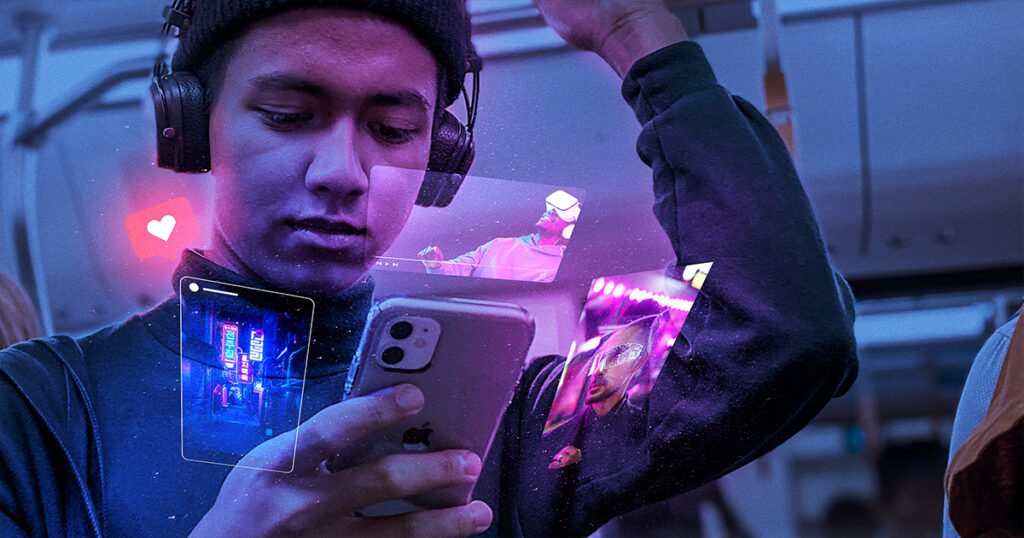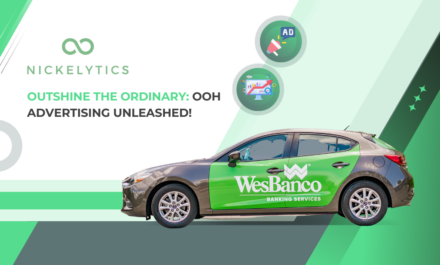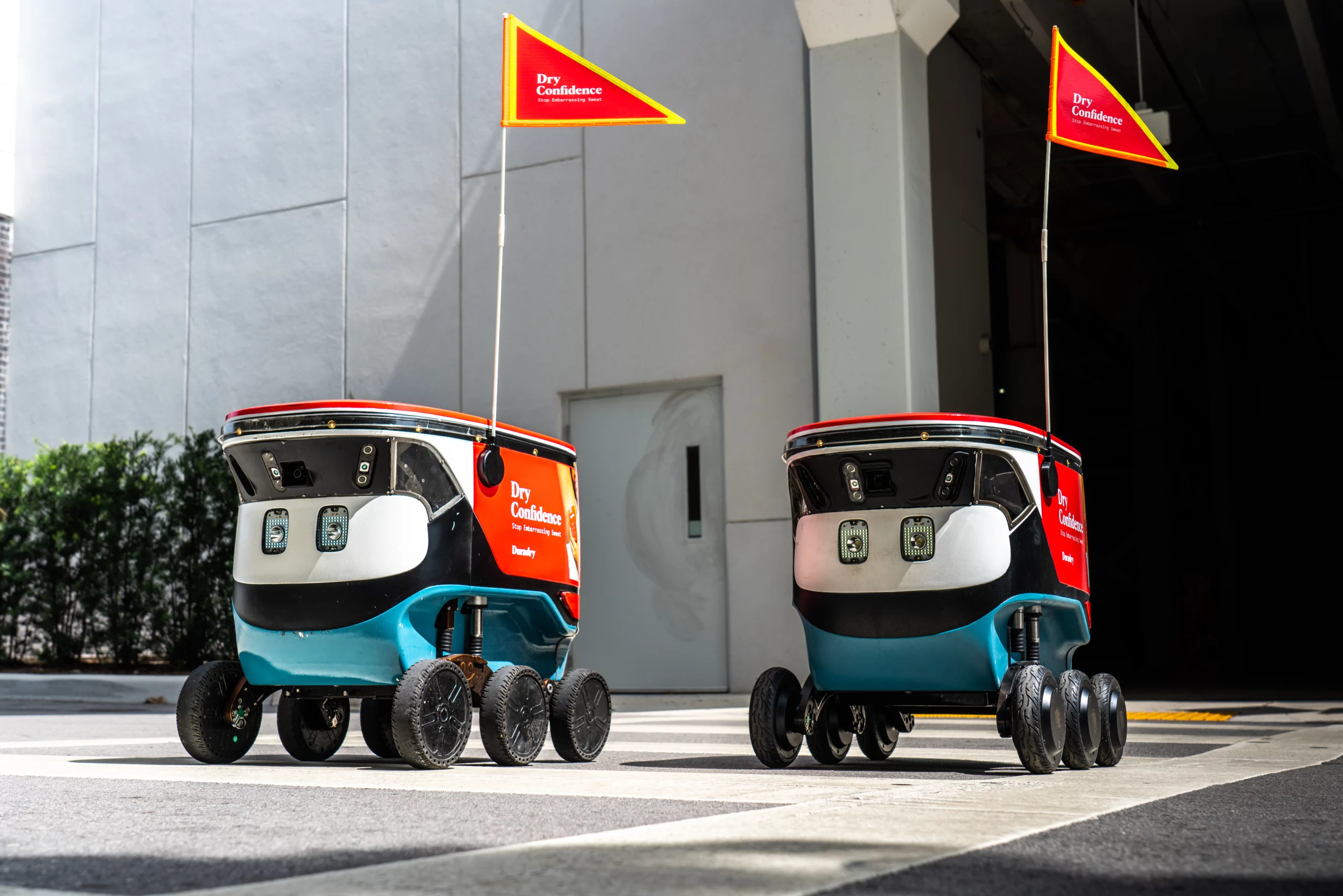The evolution of out-of-home (OOH) advertising from its traditional approach to marketing to being a digital and more functional means of marketing has been remarkable.
According to a report, OOH is the second fastest-growing ad media in the U.S. OOH campaigns are taking creative forms with innovations like augmented reality (AR).
AR allows marketers and brands to create interactive and engaging experiences for consumers.
For example, the Giant 3D Wave in Seoul’s Gangnam District uses immersive technology to attract customers. To depict summer, the advertisement uses an illusion of water crashing into the screen of the LED billboard, making passersby think that the wave will fall on them.
This article will explain the benefits of augmented reality to OOH advertising and provide an overview of the future of augmented reality in OOH advertising.
Current State of Augmented Reality in OOH Advertising
The growing market for augmented reality in OOH advertising indicates that this marketing tool is one of the best user engagement tools. For marketers interested in digital out-of-home advertising, augmented reality even promises bigger performance.
According to a report, the global AR in the OOH advertising market is expected to reach $4.30 billion by 2023, growing at a CAGR of 11.80% from 2023 to 2027.
The report states that the increasing demand for engaging and interactive advertising and the widespread use of smartphones and other mobile devices drive the market’s growth.
Several companies have already begun integrating AR into their OOH advertising campaigns.
For example, in 2017, Coca-Cola launched the first 3D robotic billboard in Times Square, New York. The campaign allowed over 300,000 office workers and tourists to have an immersive experience of their product. It was estimated to have reached over 150 million eyes in a year.
Many other brands, including Pepsi, McDonald’s, and Burger King, have experimented with AR in their OOH advertising campaigns. Pepsi Max created an AR bus shelter in London, allowing users to interact with virtual characters and games.
McDonald’s launched an AR billboard in Stockholm that allows users to scan a QR code to access a digital chef.
Burger King also created AR software that allows users to scan ads from their competitors and burn them in the virtual world.
AR in OOH advertising can provide an interactive experience, thereby increasing consumer interest in the ad. In a recent study by Verizon Media, 60% of consumers preferred interactive ads that allowed them to engage with the brand.
Fashion brands like Adidas have used AR’s interactive tools for their campaigns. For Adidas, the 3D interactive board in Dubai helped to encourage people to end plastic waste through sports.
As we have explained how augmented reality has impacted digital out-of-home (OOH) advertising in the past, we must look at some of the benefits of AR for your future campaigns.
Potential Benefits of Augmented Reality in OOH Advertising
The introduction of AR to OOH advertising is changing how brands facilitate customer engagement and how to improve customer responses. Here, we shall look at some of the benefits of AR for OOH advertising.

- Personalization and targeting of specific demographics:
AR allows advertisers to create interactive and engaging experiences tailored to their target audience’s interests and preferences. By using AR, advertisers can personalize content and target specific demographics, leading to more effective advertising campaigns.
An example of a personalized augmented reality campaign is the 3D BON V!V vending machine by Spiked Seltzer. Passersby were able to access the AR experience by scanning the QR code on the OOH murals.
Consumers were also directed to the nearest store or to a link to purchase online.
- Increased engagement and effectiveness of advertising campaigns:
AR uses interactivity to make an ad campaign more engaging, which can lead to better brand recall and a higher likelihood of sharing the experience with others. Brands leveraging augmented reality for creative advertising campaigns will increase engagement and brand awareness.
An OOH augmented reality campaign can be effective based on how much media attention it gets. An example of this is the 3D digital billboard by Versace. The ad campaign was a massive talking point on social media when it was launched.
- Valuable data insights for advertisers:
AR can provide advertisers with valuable data insights by analyzing consumer behavior and engagement with AR content. This allows advertisers to better understand their target audience and improve their advertising strategies.
AR can provide valuable data on user behavior and engagement, which can help marketers optimize their campaigns and improve their targeting.
Marketers can gain insights into how viewers interact with the AR experience and adjust their campaigns by tracking dwell time, click-through rates, and social media sharing metrics.
Overall, AR can generate buzz and social media attention by creating a shareable experience that encourages viewers to post about it. By incorporating shareable elements such as branded filters, hashtags, and user-generated content, AR can help increase the reach and impact of an OOH campaign.
Augmented reality also has some limitations that must be looked into to create an effective marketing campaign. We have looked into three of them.
The Limitations of Augmented Reality in OOH Advertising
Digital out-of-home (DOOH) advertising is predicted to record about 36.9% growth in the US by the end of 2023, and the combination with augmented reality will record great success. However, here are some limitations of augmented reality in OOH advertising.
- Accessibility and affordability of AR technology:
While AR technology has become more accessible and affordable in recent years, it still requires a certain level of technical expertise and investment to implement. This may limit the number of advertisers using AR in their OOH campaigns.
- Consumer adoption and willingness to engage with AR content:
While many consumers are familiar with AR technology, there may be a need for more awareness or interest in using it for advertising purposes. Advertisers must find ways to incentivize consumers to engage with AR content. This will make it a viable option for OOH advertising.

- Ethical considerations and potential privacy concerns:
As with any new technology, ethical and privacy concerns may be associated with using AR in advertising. Advertisers must be transparent about collecting and using consumer data and ensuring that they are not infringing on individuals’ privacy rights.
In conclusion
The future of augmented reality in OOH advertising will be more immersive, interactive, and personalized.
Augmented reality has many opportunities for marketers ready to integrate innovation into their OOH campaigns. AR helps marketers personalize campaigns, thereby increasing engagement. AR tools will easily analyze the behaviors of consumers.
Although the benefits of augmented reality in OOH advertising are great, the limitations should also be looked into to create a better experience for marketers in the future.
From ethical and privacy concerns to accessibility, availability, and consumer adoption, augmented reality can be improved to ensure a better experience for OOH advertising.
Nickelytics uses hyperlocal solutions for OOH advertising. Nickelytics combines the physical presence of OOH advertising with the power of digital technology to provide unrivaled results, helping you reach your customers regardless of their location.




